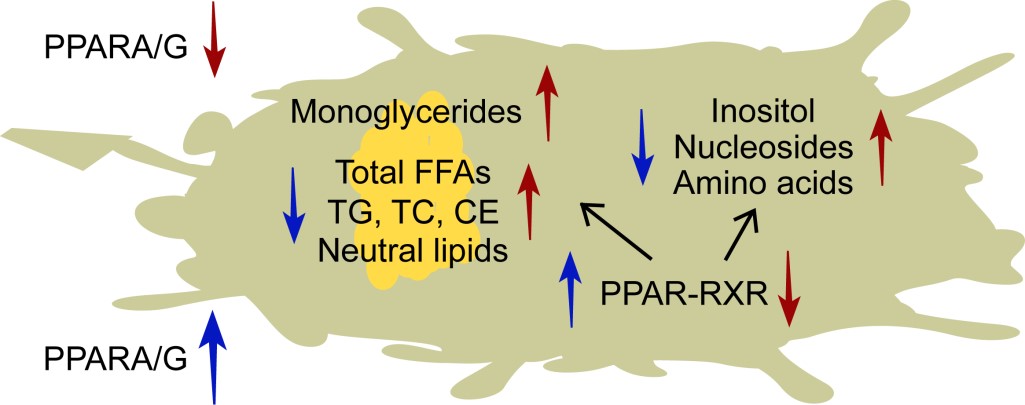Metabolic diseases, such as obesity, diabetes and atherosclerosis, have caused a tremendous health burden globally. Macrophages are innate immune cells that reside in many tissues. Signals in the microenvironments of metabolic diseases, such as inflammatory factors, oxidative stress, and excessive nutrient availability, affect macrophage metabolism, which in turn controls its functionality. Moreover, macrophage metabolism is an ideal therapeutic target for metabolic diseases. Accordingly, mediating macrophage functions by reprogramming metabolism would be beneficial for treating metabolic diseases. PPARs, targets of drugs commonly used for treating metabolic diseases, mediate multiple metabolic processes, such as lipid metabolism, amino acid metabolism and gluconeogenesis. However, the role of PPARs in the metabolic reprogramming associated with lipid accumulation in macrophages, a key pathological event in metabolic diseases, remains unclear.
Oleate, a prominent dietary, intestinal, serum and arterial tissue free fatty acid, was used to suppress the activity of PPARs and to induce lipid accumulation in macrophages by researchers from the Research Group of Environmental Health and Molecular Toxicology (Sijun Dong’s Group), Institute of Urban Environment, Chinese Academy of Sciences. In addition, WY-14643 and pioglitazone were used to activate, PPARA and PPARG signaling, respectively, and to abolish lipid accumulation in macrophages. GC-MS based metabolomics revealed that multiple metabolic pathways were altered during lipid accumulation in macrophages, and most of above changes were attenuated or abolished by PPARA/G activation. Notably, most metabolites involved in amino acid metabolism and nucleotide metabolism accumulated during lipid accumulation in macrophages, and these effects were alleviated or even abolished by PPARA/G activation. Additionally, during oleate-induced lipid accumulation and lipid lowering with WY-14643 and pioglitazone in macrophages, levels of most amino acids were positively associated with neutral lipid, total cholesterol, cholesterol ester, total free fatty acid and triglyceride levels but negatively associated with expression of genes related to PPARA/G signaling. Furthermore, glycine was found to be a potential biomarker for assessing lipid accumulation and the lipid-lowering effects of PPARA/G in oleate-treated macrophages. This study provides a basis for the study on molecular mechanisms of metabolic diseases, such as obesity, diabetes and cardiovascular disease, discovery of potential therapeutic targets and biomarkers, and molecular functions of PPARs.
This study entitled Peroxisome proliferator-activated receptor A/G reprogrammes metabolism associated with lipid accumulation in macrophages was published in Metabolomics, 2019, 15(3): 36. Dr. Guozhu Ye and Ph.D. Candidate Han Gao are co-first authors, meanwhile, Dr. Guozhu Ye and Prof. Sijun Dong are co-corresponding authors. This study was supported by the National Natural Science Foundation of China (Nos. 21507128, 41390240, 21777158, 21477124 and 21677140) and other fundings.

Schematic diagram of molecular mechanisms by which PPARA/G reprogrammes metabolism in macrophage foam cells.